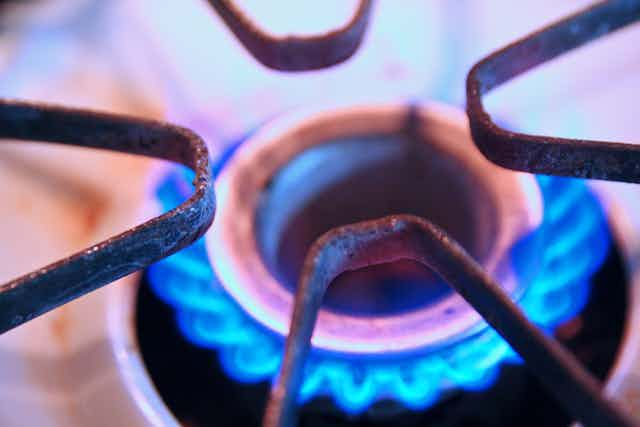Resource Minister Gary Gray has called for greater natural gas exploration and warned that Australia would become less competitive in Asia if industry fails to take heed. But is insufficient exploration really the problem?
While Australia is now less competitive as a location for natural gas investment, lack of exploration is more a symptom than a cause of this reduced competitiveness.
Costs too high
There are a number of factors reducing Australia’s competitiveness. First, the costs of developing resource projects in Australia have become too high.
There is a shortage of skilled labour, and opposition to importing specialist workers - either permanently or on special visas - doesn’t help.
There is also a shortage of some specialised equipment, such as rigs with horizontal drilling capability.
The remote location of many of Australia’s gas resources add to the cost of transporting equipment and supplies.
Finally, restrictions on land development increase costs for workers wanting to buy or rent real estate, or fly-in, fly-out to jobs so they can avoid those costs. High land costs also make it difficult to attract teachers, police, doctors and small businesses to resource areas. These disadvantages of living and working in remote locations in turn lead to demands for higher wages.
Regulation changes
Changes to labour market laws embodied in the Fair Work Act have increased the threat of industrial disruptions, and limited opportunities to improve productivity. Concerns have been expressed by the previous chair of the Productivity Commission, business leaders across many sectors and specifically the mining sector.
In some ways, it does not matter whether these criticisms are valid. So long as they accurately reflect investor perceptions they will adversely impact investment decisions.
Australia also has imposed some “feel good” regulations that have raised costs while providing few if any benefits. The requirement to sequester the carbon dioxide (CO2) produced in the Gorgon project substantially increased costs. However, no climate model would predict a measurable impact on global temperatures from total CO2 emissions over the life of the project.
New regulations on the coal seam gas sector have also been said to add nothing of value to state regulations but will nevertheless increase costs.
Failed trust
Unanticipated changes to Australian tax laws have also damaged Australia’s reputation as a trustworthy investment location.
I attended a meeting of the Houston chapter of the US Association for Energy Economics soon after the first Rudd Government started discussing a mining tax. The chapter includes economists at the major energy firms in Houston among its members. Knowing that I was from Australia, those members mobbed me when I entered the room and asked, “What in the world is your government thinking? Don’t they understand that Australia’s main advantage as a location for investment is that it has stable and predictable policy? Even talking about such a tax damages that reputation.”
The blow-out in government spending, and especially the budget deficit, over the last few years has also increased the risk of macroeconomic instability in Australia. Future governments may be tempted to inflate to reduce the real value of the outstanding debt, or will need to raise real interest rates above where they otherwise would have been. In either case, the risk of investing here has increased.
Given its disadvantages - such as higher costs - one of Australia’s main attractions to long-lived, risky investments was that it had a stable and predictable policy environment, giving investors the chance to earn a competitive rate of return.
Unfortunately, while a good reputation is easy it to lose, it takes a long time to rebuild.
East Asian demand
There is increasing uncertainty about how much longer East Asian demand for Australian natural gas will grow at recent rapid rates.
China may turn to increased pipeline imports, including from Russia as the latter seeks alternative sources of natural gas revenue to compensate for diminished prospects in Europe. There is also a reasonable chance that China will develop domestic shale gas resources over the next decade.
The currently high demand for natural gas in Japan and South Korea is related to shutdowns of nuclear power plants, most of which are likely to be re-opened.
Finally, prospective exports of liquefied natural gas (LNG) from the US and Canada will also take market share from Australia. More importantly, perhaps, such exports will also likely intensify a move to shorter term and more flexible LNG trading arrangements, which could disadvantage larger, more capital intensive projects like the ones recently pursued in Australia.
Where does this leave Australia?
In the long term, there is good evidence that natural gas is a superior fuel to coal and oil. First, it is less polluting than these other fossil fuels.
Second, the share of electricity in final energy consumption tends to increase as economies develop, and natural gas has economic advantages for generating electricity. Combined cycle gas turbines are very efficient, while single cycle turbines are very flexible and provide valuable peaking and backup capacity for renewable electricity generators.
Natural gas thus is likely to continue to take market share from other energy sources for some time to come.
In addition, other large population developing countries, such as India, Indonesia and Brazil, are likely to enter high energy demand growth phases by the middle of the next decade. These developments will create further market opportunities for Australia in the latter half of the 2020s.
In the meantime, Australia should learn from the mistakes made during the recent investment boom and take policy actions to restore its reputation in time for the next one.

